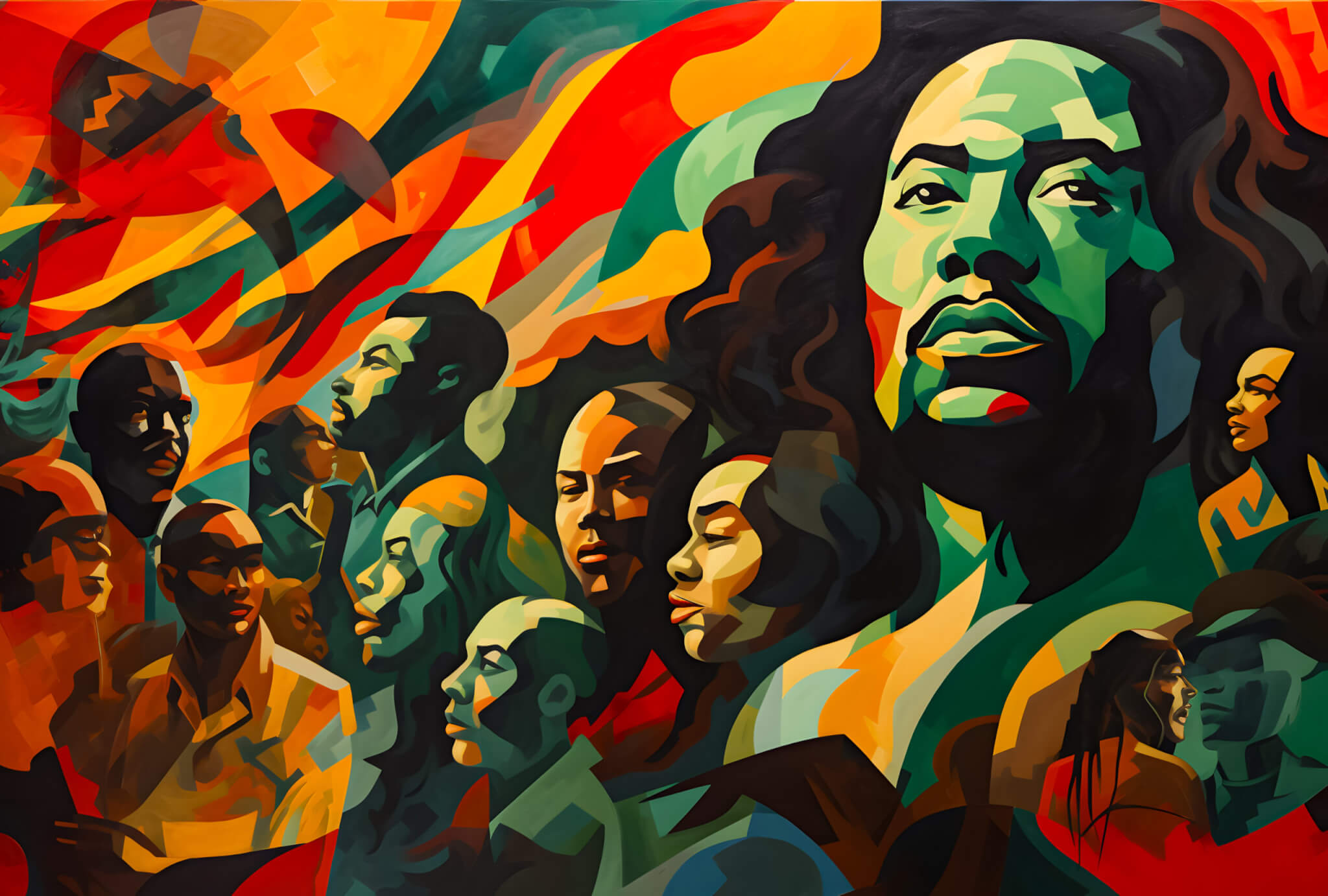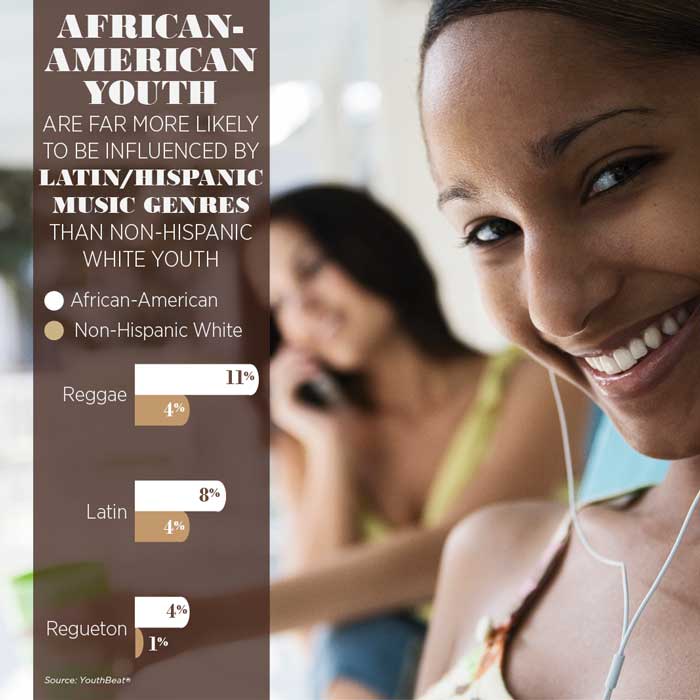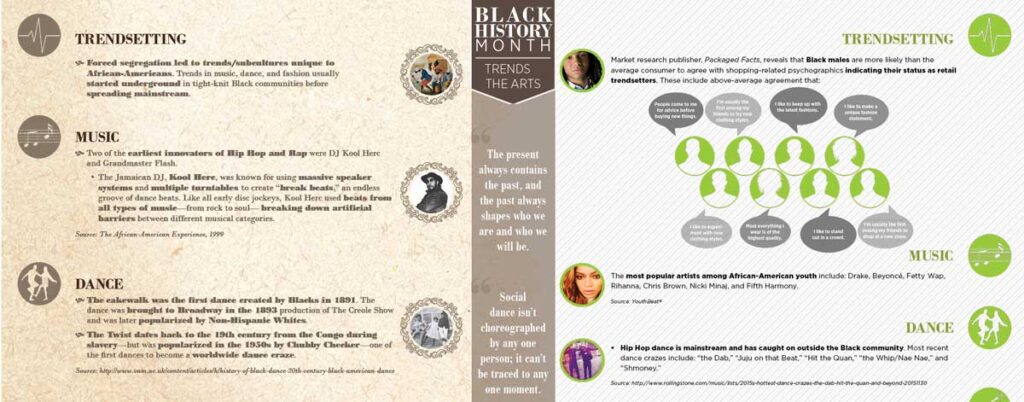
Marketing Insights from Black History Month: A Look at Black Influence on Pop Culture
Filed Under: Market Research, Black / African American
Ashleigh Williams
Senior Director, In-Person Qualitative Research
American pop culture is coveted across the globe. American pop culture often sets the tone of innovation and triggers trends in the world stage, including the birth of rock n’ roll, social media, and the Hollywood film industry. Minorities in the U.S. are a part of this puzzle of influence and are not sitting on the sidelines, despite not always being credited for doing so. Blacks, in particular, have an undeniable influence in the dynamics of our nation’s folklore. Historically, the Black community has displayed an inclination to be forward-thinking and innovative.
As we close our Black History Month blog series, we focus on some of the innumerable contributions the Black community has made in the fields of music, fashion, and dance.
Influencing Music
Black culture is most credited for its creation of R&B music and hip hop/rap today. But, in fact, Black culture’s impact on music dates all the way back to when Africans were brought to this

country. African-American slaves on southern plantations cultivated their own musical styles, which later evolved into gospel, blues, and what is now known as bluegrass and country music. The rhythms from the drums and the use of instruments like the banjo can be seen in the fabric of modern music genres that we know of today. Although no one can say for sure where the origins of jazz lie or who cultivated it, it is known that it combines the musical traditions of Black New Orleans with the creative flexibility of the blues.
In the 1950s, rock n’ roll acts like Chuck Berry, Little Richard, “Big Boy” Crudup, and Buddy Holly set the stage for mainstream non-Hispanic white (NHW) music acts like the Beatles, and Elvis Presley. The 1960s brought Motown and the Detroit sound, which gave us classic music artists like Stevie Wonder, Smokey Robinson, and the Jackson 5 , credited today as the gold standard for music across cultural lines. In fact, within Black culture, it is important to understand that some Blacks show some feelings of resentment that Black musicians weren’t given due credit for spearheading and pioneering specific music genres and sounds.
It comes as no surprise, especially today that one of the biggest contributions to music that Black culture has made is to hip hop and rap music. With origins from the disc jockey community on Black radio and in nightlife, hip hop and rap music have always reflected the daily life of Blacks in this country from the struggles to triumphs. It is just one of many examples how Black culture can cross over and be adapted by other cultures.

Influencing Fashion
Black culture’s influence on American culture doesn’t end with its contributions to music. Fashion is also a category in which Blacks have made their own unique contributions, many of which have become noted milestones in the fashion industry. Fashion within Black culture began with church style in the South. Every Sunday, slaves would put on their “Sunday’s Best” for church service. It was a way for them to transform themselves from the hardships of their circumstances to “saints” who were ready to worship. This style spilled over to influence fashion across the entire region from Black seamstresses who created fashions for Whites with embellishments and grandeur. In fact, this influence continued into the 1940s and ’50s with high couture fashion designer, Ann Lowe, who designed the famous wedding dress for Jackie O, an exquisite example of Southern-style fashion at its very best.
Historically, Black fashion has had a political undertone or essence of rebellion. From black leather and afros in the 1970s, to the baggy garb of the gangsta hip hop movement in the 1990s. Today, Black fashion continues to make a political statement within the Black Lives Matter movement. Black youth can be seen wearing “I Can’t Breathe” t-shirts with hoodies from the 2010s.
In addition, Black-owned businesses not only appeal to Blacks when it comes to developing a personal style but also have cross-cultural influence. Beats by Dre, Air Jordan, and Sean John are just a few that have made waves in the ‘mainstream’ market. Self-proclaimed “sneakerheads” are an established group of shoe intuitivists and today span all cultural backgrounds.
Influencing Dance
Lastly, dance is deeply engrained in Black culture and has been a universal language cross-culturally with those outside of the Black community. Social dance in Black culture has a rich history that dates back 200 years-it was a way for slaves to unify and communicate past various African languages-and to express an inner sense of freedom under captivity while keeping African traditions alive. Some of the first well-known dances from the 1930s include the Lindy Hop and Charleston, developed by small Black communities in Charleston, North Carolina. At the start of the Great Migration, these dances continued to be performed by Blacks who moved to large urban cities and became a cornerstone of the Harlem Renaissance. Modern dances like the hustle and the electric slide of the 1970s and ’80s brought people together regardless of the region they were from and even crossed over to be adapted by the masses.
Blacks also helped to create/contribute to new genres of dance that we know of today: tap, jazz, modern dance, and hip hop. Jazz dance originated from the African-American vernacular dances of the late 1800s to the mid-1900s. Pioneers like Katherine Dunham, an academic anthropologist and dancer, made these Caribbean traditional dances into the performing art form.
Today, social dance is still an indicator of community-belonging – if you know the steps, you are identified as part of a community. Social dance is regional (“Footwork” and “Dlow Shuffle” in Chicago, “Nae Nae” in Atlanta), yet many of these dances still gain national adoption eventually after surfacing from underground groups.
Trendsetting Now
So what does this all mean for the cultural climate today? Based on future projections Blacks will continue to be trendsetters especially in these three categories. Black buying power is projected to reach $1.2 trillion this year and $1.4 trillion by 2020, according to a report from the University of Georgia’s Selig Center for Economic Growth. This is a significant increase, approximately 275 percent growth since 1990, when it was just $320 billion.
Because Blacks are younger on average, they’re trendsetters and tastemakers for young consumers of all races, according to the Selig Center. They influentially define mainstream culture and wield immense influence over how Americans choose to spend their money. Any marketing campaign targeting Millennials “must include messages to reach African-American youth,” notes Nielsen. However, Blacks don’t just set trends in a vacuum, they are influenced by the cultures that they interact with. As we mentioned before in last week’s blog, Blacks are continuously influenced by other cultures in the culinary space, adapting dishes into their menu and giving them their own flavor. In addition, we know that Black youth are far more likely to be influenced by Latin/Hispanic music genres than NHWs. Blacks have also been known to be more willing to give new brands a try. Pepper Miller and Herb Kemp, co-authors of What’s Black About It? Insights to Increase Your Share of a Changing African-American Market, note that Black consumers are “more likely than NHWs to be among the first to set new trends and to consider themselves on the cutting edge” which implies that they are willing to break from previous brand loyalties to try something new. Being natural trendsetters positions blacks as an ideal agent of change and influence for brands seeking ambassadors for new products and “up and coming” lifestyle innovations. Because of their impactful influential nature, marketers should look to this group as a way to help their brands emerge from a smaller or even underground context to mainstream pop culture.
To learn more around this topic, download our factsheet on this theme and some interesting background facts behind Black contributions in music, fashion, and dance.
explore featured
Case studies

